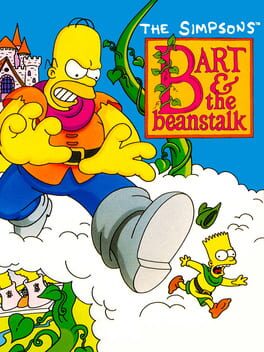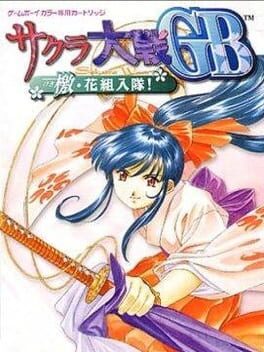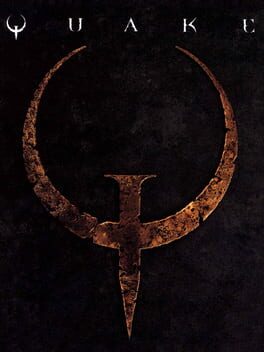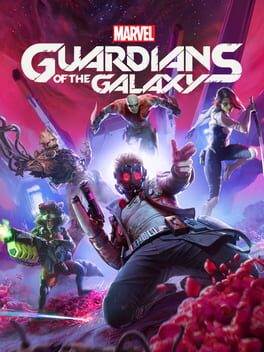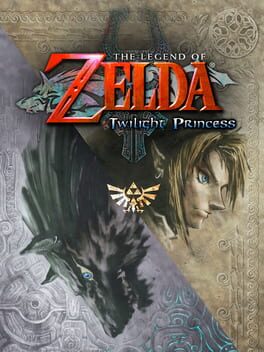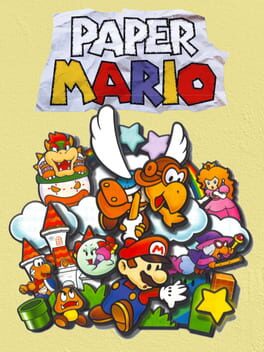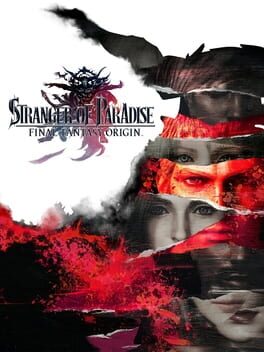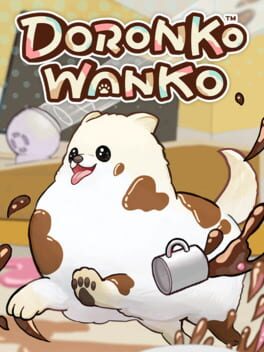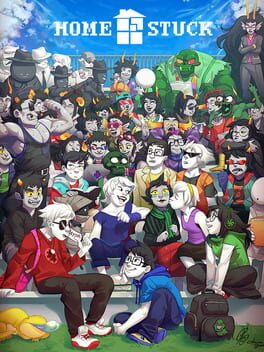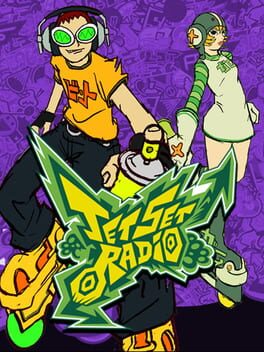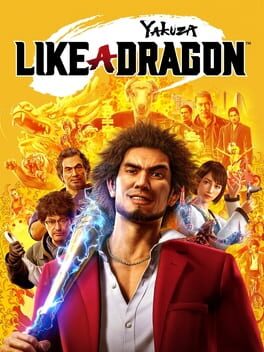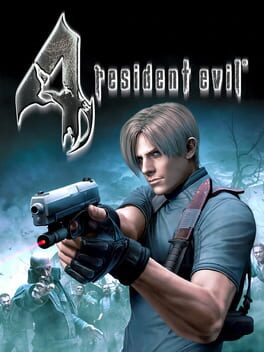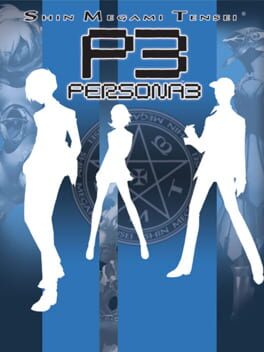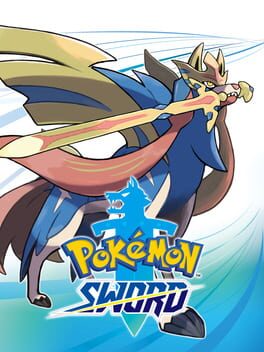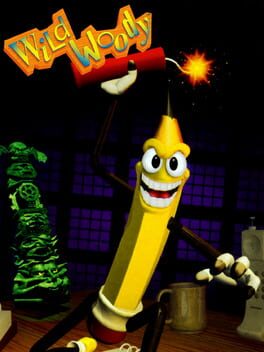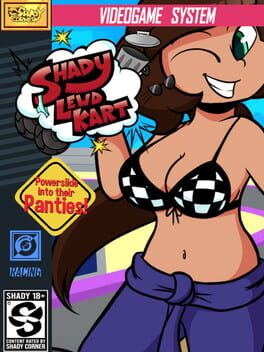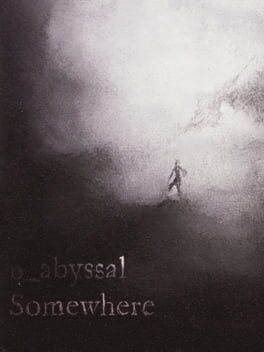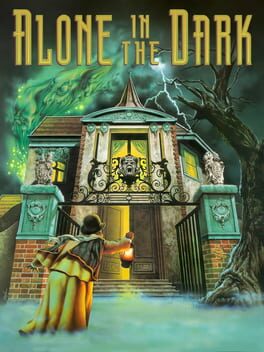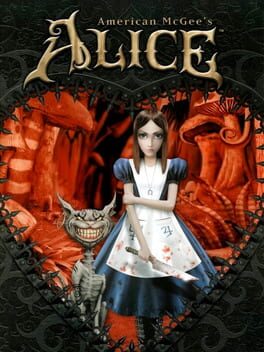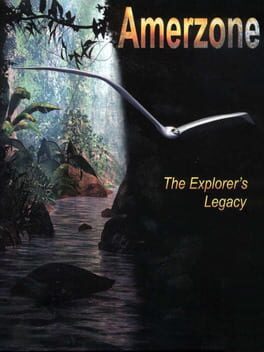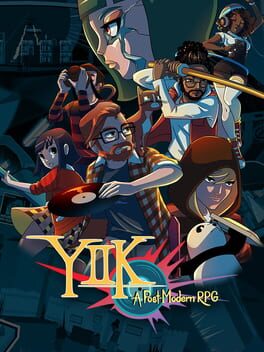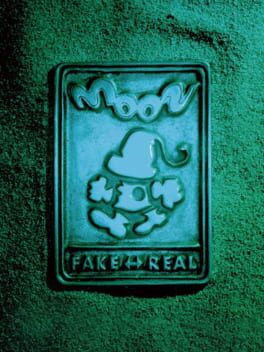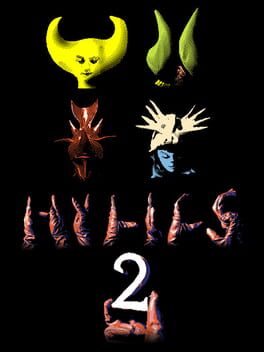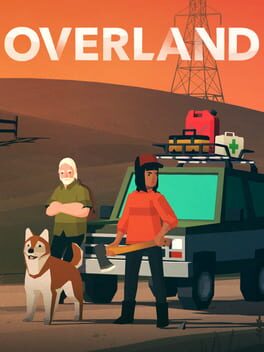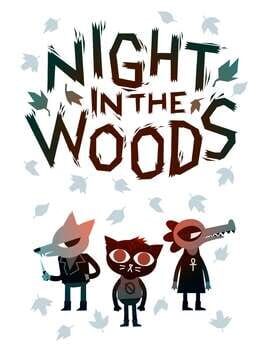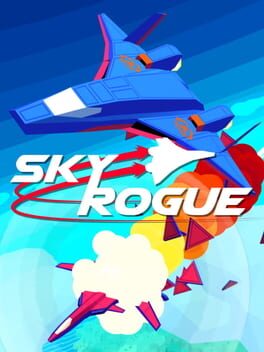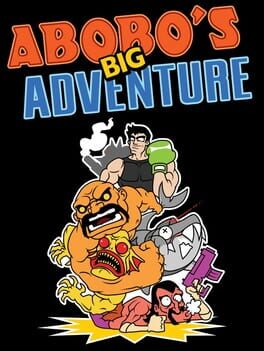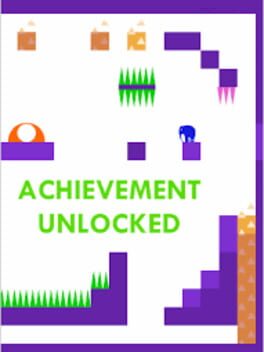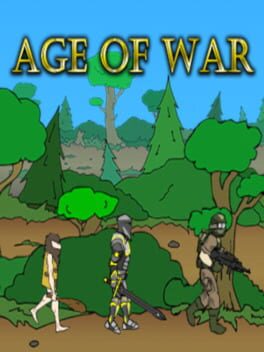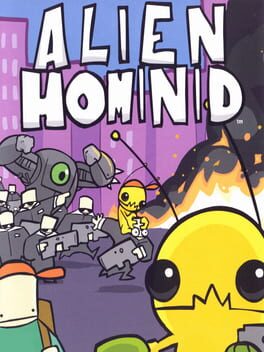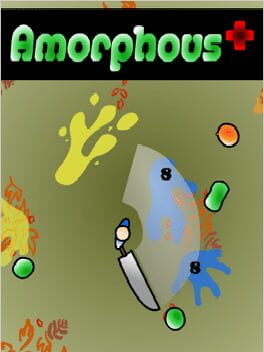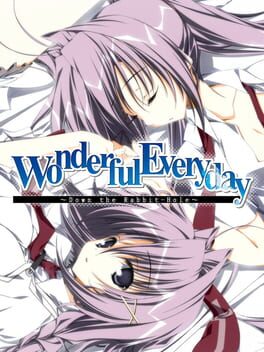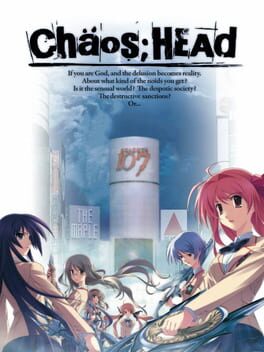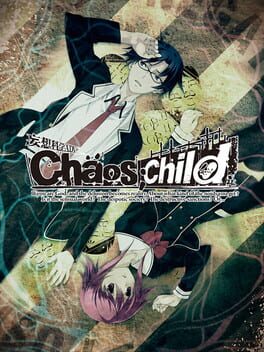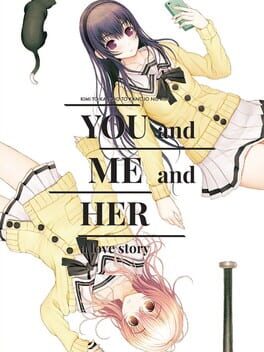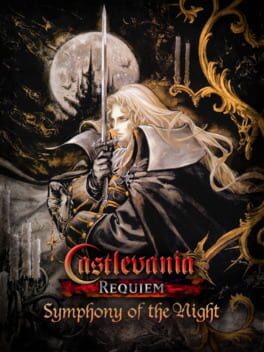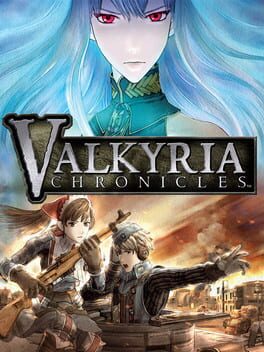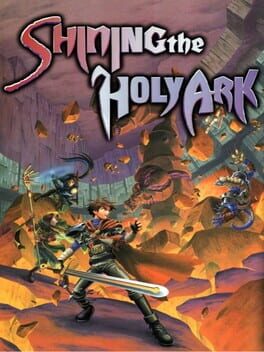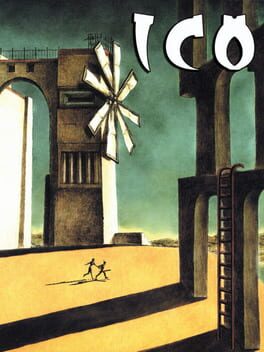Iru
BACKER
13544 reviews liked by Iru
Sonic Adventure
1998
Before playing this game, the only 3D Sonic I ever played was Sonic Colors. And even then, a good chunk of that game was in 2D. So Adventure was my first fully 3D Sonic game ever. For years, I'd hear people say this game was broken beyond belief or just simple a "guilty pleasure" game that they enjoy despite being shit. While I did not love it like some people do, I can personally say I did not think the games were either of those things.
The game is broken up into 6 (technically 7 if you complete all other routes) character routes. You can play as Sonic, Tails, Knuckles, Amy, Big the cat and Gamma respectively. Each of these characters play differently from each other, whether it's for better or worse, and even tho each playthrough varies in quality, I can at least commend how ambitious this is. Because in each character's playthrough, you get different cutscenes and also context for certain scenes that may not be explained in earlier playthroughs. As my friend Lemonstrade said, it's sort of similar to what Drakennier does which again is super cool conceptually, especially for a 1998 game.
But back to the actual characters, Sonic is the clear best one here. He has his spin dash, is of course the fastest in the game and also has a super fun aerial dash. I've heard people say the controls are bad in this game and I simply don't get that at all. Sonic, at least, feels simply perfect to control. The levels on the other hand, I can see people having issues with. I disagreed with the fact this game is broken beyond belief, but it definitely can be a bit broken if you're unlucky. I only glitched through the stage like 2 or 3 times, but the first time it happened was on the very first stage. That made me think the entire game would be broken, but it wasn't. Unless I got lucky, those claims, while still credible sometimes...are massively overblown. Besides that though, Sonic's stages while still fun, can feel incredibly janky just because of how fast he goes. It's hard to explain but if you've played the game you'd know, a lot of times the animations and your movement through levels can feel very unwieldly. It can be really hard to control sonic sometimes, and it often looks super awkward when looking back at it. Like I said it's hard to explain, and while I still had a ton of fun with his levels (just because he feels so good to controls) I can't help but think thee levels feel off. Again, this is mostly when you're at full speed going through loop de loops and shit. When it's slower sections you're going through, it's not an issue.
As for the other characters, they all have significantly less stages than Sonic. Tails has you racing against sonic, and with him being able to glide, you can take some seriously crazy shortcuts. The game itself even encourages this which I thought was pretty neat. Knuckles has you searching for three master emerald shards. It's basically a treasure hunt, with the emerald icons turning different colors depending on how close you are to them. These were alright, but story-wise I wasn't really a fan. Honestly thought his story would be more different from Sonic's than it was, not to mention the final Chaos fight was barely different from Sonic's (and Tails had a unique fight for his ending). Amy was probably my least favorite character to use. Her levels consisted of getting to the end like Sonic, while running away from one of Robotnik's robots. Problem is, while her hammer bounce is kinda cool, her moveset isn't nearly as fun as Sonic's yet her levels are still long like Sonic's (which isn't much of an issue with Tails and Knuckles). That plus, besides the one Gamma scene, her cutscenes were lame. Big the cat is the most contentious character by far, and honestly I didn't hate him. Yeah his cutscenes are super dumb and don't add much to the story. However his campaign is by far the shortest, and the fishing is actually really easy (and kinda fun) once you get the hang of it. Gamma is by far the best character next to Sonic. Not only are his stages fast paced, with you having to kill enemies quickly to get more time to your total. His story is actually significantly different compared to the others, and quite touching at that. If I had to rank each character's campaigns, I'd say Sonic>Gamma>Tails>Big>Knuckles>Amy.
To go to each actual level, you have to navigate the hubworld. For a 1998 game, it's not bad but it can feel somewhat empty I felt. Though, there are things to get that aren't just apart of the main story. There are some optional collectables and even some minigames you can play. There's also the chao garden which, I tried to get to work but since I was emulating the game, I suspected there was an add on I needed or something idk. But from the little I've heard, it does sound fun.
The story in general, does have its high points, like the aforementioned Gamma campaign and the ending is really nice. It's simple but effective. However, the actual voice acting is horribly stilted a lot of the time. It's not even a so bad it's good situation, it was just mediocre a lot of the time. That is, except for Robotnik who is super over the top but hilarious. Even despite the fact they reuse fight dialogue in actual scenes (which is jarring for sure) his dialogue is super duper memorable and easily the highlight. Something else that was memorable were some of the face animations, goddamn are they awful sometimes.
I didn't like LOVE the soundtrack like some people do, but it is quite nice overall. Very experimental which I appreciate a ton. My favorite songs were probably Red Skull Mountain, Welcome to Station Square and Egg Carrier: A Song That Keeps Us on the Move.
Once you complete all 6 character routes, you unlock the 7th and final one..Super Sonic. This is essentially just the final boss and some closure on the story, but it's definitely satisfying. You become Super Sonic, defeat Chaos's final form at supersonic speed, and in turn this cleanses Chaos of his evil as we find out he wasn't ever bad from the start. The closure on the whole Chao's and the past cutscenes was really nice. That along with Gamma's scenes ofc, easily the highlights of the story.
This game is definitely flawed in some ways, and Adventure 2 might improve on everything in this game idk. But I can officially say, this game is overall good and that Sonic had a good transition to 3D. Not everything works in this game, but I can acknowledge this game is full of heart.
May drop it down to a 6 cuz I was feeling like that for a good while but for now it's a 7.
The game is broken up into 6 (technically 7 if you complete all other routes) character routes. You can play as Sonic, Tails, Knuckles, Amy, Big the cat and Gamma respectively. Each of these characters play differently from each other, whether it's for better or worse, and even tho each playthrough varies in quality, I can at least commend how ambitious this is. Because in each character's playthrough, you get different cutscenes and also context for certain scenes that may not be explained in earlier playthroughs. As my friend Lemonstrade said, it's sort of similar to what Drakennier does which again is super cool conceptually, especially for a 1998 game.
But back to the actual characters, Sonic is the clear best one here. He has his spin dash, is of course the fastest in the game and also has a super fun aerial dash. I've heard people say the controls are bad in this game and I simply don't get that at all. Sonic, at least, feels simply perfect to control. The levels on the other hand, I can see people having issues with. I disagreed with the fact this game is broken beyond belief, but it definitely can be a bit broken if you're unlucky. I only glitched through the stage like 2 or 3 times, but the first time it happened was on the very first stage. That made me think the entire game would be broken, but it wasn't. Unless I got lucky, those claims, while still credible sometimes...are massively overblown. Besides that though, Sonic's stages while still fun, can feel incredibly janky just because of how fast he goes. It's hard to explain but if you've played the game you'd know, a lot of times the animations and your movement through levels can feel very unwieldly. It can be really hard to control sonic sometimes, and it often looks super awkward when looking back at it. Like I said it's hard to explain, and while I still had a ton of fun with his levels (just because he feels so good to controls) I can't help but think thee levels feel off. Again, this is mostly when you're at full speed going through loop de loops and shit. When it's slower sections you're going through, it's not an issue.
As for the other characters, they all have significantly less stages than Sonic. Tails has you racing against sonic, and with him being able to glide, you can take some seriously crazy shortcuts. The game itself even encourages this which I thought was pretty neat. Knuckles has you searching for three master emerald shards. It's basically a treasure hunt, with the emerald icons turning different colors depending on how close you are to them. These were alright, but story-wise I wasn't really a fan. Honestly thought his story would be more different from Sonic's than it was, not to mention the final Chaos fight was barely different from Sonic's (and Tails had a unique fight for his ending). Amy was probably my least favorite character to use. Her levels consisted of getting to the end like Sonic, while running away from one of Robotnik's robots. Problem is, while her hammer bounce is kinda cool, her moveset isn't nearly as fun as Sonic's yet her levels are still long like Sonic's (which isn't much of an issue with Tails and Knuckles). That plus, besides the one Gamma scene, her cutscenes were lame. Big the cat is the most contentious character by far, and honestly I didn't hate him. Yeah his cutscenes are super dumb and don't add much to the story. However his campaign is by far the shortest, and the fishing is actually really easy (and kinda fun) once you get the hang of it. Gamma is by far the best character next to Sonic. Not only are his stages fast paced, with you having to kill enemies quickly to get more time to your total. His story is actually significantly different compared to the others, and quite touching at that. If I had to rank each character's campaigns, I'd say Sonic>Gamma>Tails>Big>Knuckles>Amy.
To go to each actual level, you have to navigate the hubworld. For a 1998 game, it's not bad but it can feel somewhat empty I felt. Though, there are things to get that aren't just apart of the main story. There are some optional collectables and even some minigames you can play. There's also the chao garden which, I tried to get to work but since I was emulating the game, I suspected there was an add on I needed or something idk. But from the little I've heard, it does sound fun.
The story in general, does have its high points, like the aforementioned Gamma campaign and the ending is really nice. It's simple but effective. However, the actual voice acting is horribly stilted a lot of the time. It's not even a so bad it's good situation, it was just mediocre a lot of the time. That is, except for Robotnik who is super over the top but hilarious. Even despite the fact they reuse fight dialogue in actual scenes (which is jarring for sure) his dialogue is super duper memorable and easily the highlight. Something else that was memorable were some of the face animations, goddamn are they awful sometimes.
I didn't like LOVE the soundtrack like some people do, but it is quite nice overall. Very experimental which I appreciate a ton. My favorite songs were probably Red Skull Mountain, Welcome to Station Square and Egg Carrier: A Song That Keeps Us on the Move.
Once you complete all 6 character routes, you unlock the 7th and final one..Super Sonic. This is essentially just the final boss and some closure on the story, but it's definitely satisfying. You become Super Sonic, defeat Chaos's final form at supersonic speed, and in turn this cleanses Chaos of his evil as we find out he wasn't ever bad from the start. The closure on the whole Chao's and the past cutscenes was really nice. That along with Gamma's scenes ofc, easily the highlights of the story.
This game is definitely flawed in some ways, and Adventure 2 might improve on everything in this game idk. But I can officially say, this game is overall good and that Sonic had a good transition to 3D. Not everything works in this game, but I can acknowledge this game is full of heart.
May drop it down to a 6 cuz I was feeling like that for a good while but for now it's a 7.
Clannad
2004
I think a term commonly associated with romance/sol animanga and games is “wish fulfillment.” Now, from my experience, it's a term usually met with some level of disdain or condescension. “Wow what a loser, they need this thing to feel good about themselves.” And, sure, I can understand where that attitude comes from, in fact I'm like that sometimes too. But I feel it's not that simple. People come from different backgrounds, places, and circumstances. Sometimes what we need is comfort from something, even if it isn't real.
Clannad, among many, many other beloved visual novels is boiled down to the common “your friends and family are important, your life is worth living” morals, but is it a bad thing to be so commonly communicated? I would assume that Maeda and the many other writers at Key are trying to convey this, and even if they were or not, intention does not always align with found purpose. Tomoya Okazaki, our protagonist, is a great stand in for players like me to some degree. He's still his own character, but I think him being a loner to align with the usual “wish fulfillment” protagonist role really works to its benefit. No matter your background or role, there is worth in finding friends and family, whether it be genetic or found. It finally gives us purpose to those who feel so aimless in life. Clannad is not simply “wish fulfillment” at play. It's inspiring us to fulfill those wishes ourselves, and fulfill the wishes of others.
I’ve seen complaints about Clannad’s core structure before, as for some people the routes are “not interconnected enough”. But is that a problem? In my opinion, anyway, Clannad is an anthology of the multiple “what if” scenarios surrounding Okazaki’s journey in life. While Nagisa’s route is what leads to the true ending of the story, it doesn’t make the other routes pointless. Regardless of what is the “true” outcome of the story, your experiences and how you see these characters develop will always live on with the player. You get to see Okazaki give these people true happiness in life, and by the true ending, he is repaid for everything he’s done. While in gameplay the route system is a little rough around the edges with much needed polish, I think playing with a guide allows for a very smooth experience.
Playing this after my most prior Key visual novel experience, that being AIR, really opened my eyes to how well thought out and executed much of Clannad is. While AIR suffers from an overly ambitious but ultimately meaningless structure, Clannad takes a safer approach and cuts out any filler. Jun Maeda and his team really wanted to make up for the mistakes of AIR, and you can really tell from how much more polish is applied to this game. Despite this being one of the longest games I’ve ever played, Clannad rarely falls victim to artificial padding. The game gives you and makes proper use of the “skip already read text” feature, which makes hopping into your next route a very quick and easy experience. It helps that the game is split into 10+ routes that all vary in length, meaning I don’t think the game can ever burn you out from a scenario. Each route (with two exceptions, one being entirely optional) is very different overall so nothing is samey either. I’d also like to make note of the amount of content on offer, Clannad is not only long from the main game but has TONS of little secrets and extra blurbs of dialogue to discover, it really feels like the team wanted to put as much as they could onto the disc.
And that’s the overall thing I love about Clannad: it’s very polished. Not perfect, but very damn close. Clannad may seem safe or tropey, but it uses those aspects and pushes them to a wonderful and engaging extent. The current top review tries to make fun of fans of this game and I’d have to say that this person probably has never experienced joy in their life. None of the huge visual novels I’ve played so far have been flops, and Clannad is no exception either. In fact, out of the three (Higurashi, Tsukihime, Clannad) I would say this is my new favorite, and knowing that Key still has some fantastic games in their catalog for me to still try out (Kanon, Little Busters!, and Rewrite) has me so immensely excited. But none of those games, or any visual novels in the future will take away what a special experience Clannad was for me. I had taken a long break from reviews and I needed to get out of that slump, and this game was what inspired me to write a little something again, especially seeing how none of the longer reviews about this game on this site are in good faith. I wanted to fix that. Thank you for reading, and if this review manages to get even one person to fully play through this game, I’ll be happy.
Clannad, among many, many other beloved visual novels is boiled down to the common “your friends and family are important, your life is worth living” morals, but is it a bad thing to be so commonly communicated? I would assume that Maeda and the many other writers at Key are trying to convey this, and even if they were or not, intention does not always align with found purpose. Tomoya Okazaki, our protagonist, is a great stand in for players like me to some degree. He's still his own character, but I think him being a loner to align with the usual “wish fulfillment” protagonist role really works to its benefit. No matter your background or role, there is worth in finding friends and family, whether it be genetic or found. It finally gives us purpose to those who feel so aimless in life. Clannad is not simply “wish fulfillment” at play. It's inspiring us to fulfill those wishes ourselves, and fulfill the wishes of others.
I’ve seen complaints about Clannad’s core structure before, as for some people the routes are “not interconnected enough”. But is that a problem? In my opinion, anyway, Clannad is an anthology of the multiple “what if” scenarios surrounding Okazaki’s journey in life. While Nagisa’s route is what leads to the true ending of the story, it doesn’t make the other routes pointless. Regardless of what is the “true” outcome of the story, your experiences and how you see these characters develop will always live on with the player. You get to see Okazaki give these people true happiness in life, and by the true ending, he is repaid for everything he’s done. While in gameplay the route system is a little rough around the edges with much needed polish, I think playing with a guide allows for a very smooth experience.
Playing this after my most prior Key visual novel experience, that being AIR, really opened my eyes to how well thought out and executed much of Clannad is. While AIR suffers from an overly ambitious but ultimately meaningless structure, Clannad takes a safer approach and cuts out any filler. Jun Maeda and his team really wanted to make up for the mistakes of AIR, and you can really tell from how much more polish is applied to this game. Despite this being one of the longest games I’ve ever played, Clannad rarely falls victim to artificial padding. The game gives you and makes proper use of the “skip already read text” feature, which makes hopping into your next route a very quick and easy experience. It helps that the game is split into 10+ routes that all vary in length, meaning I don’t think the game can ever burn you out from a scenario. Each route (with two exceptions, one being entirely optional) is very different overall so nothing is samey either. I’d also like to make note of the amount of content on offer, Clannad is not only long from the main game but has TONS of little secrets and extra blurbs of dialogue to discover, it really feels like the team wanted to put as much as they could onto the disc.
And that’s the overall thing I love about Clannad: it’s very polished. Not perfect, but very damn close. Clannad may seem safe or tropey, but it uses those aspects and pushes them to a wonderful and engaging extent. The current top review tries to make fun of fans of this game and I’d have to say that this person probably has never experienced joy in their life. None of the huge visual novels I’ve played so far have been flops, and Clannad is no exception either. In fact, out of the three (Higurashi, Tsukihime, Clannad) I would say this is my new favorite, and knowing that Key still has some fantastic games in their catalog for me to still try out (Kanon, Little Busters!, and Rewrite) has me so immensely excited. But none of those games, or any visual novels in the future will take away what a special experience Clannad was for me. I had taken a long break from reviews and I needed to get out of that slump, and this game was what inspired me to write a little something again, especially seeing how none of the longer reviews about this game on this site are in good faith. I wanted to fix that. Thank you for reading, and if this review manages to get even one person to fully play through this game, I’ll be happy.
Have you ever known someone who, at one point, you used to be really good friends with, but then out of nowhere they just… start to suck? Like, they become incredibly irritating to be around, become a massive asshole, or in the worst case scenario, did something horrible to where you can no longer comfortably associate yourselves with them. Then after you and everyone else distances themselves from them, they then try to do better, and by that, I mean they REALLY try, either by improving themselves or trying to make up for their past actions, and you can really see the effort they are putting in, to a degree, but at that point, the damage has already been done, and you kinda can’t trust them again. That is essentially how I would describe how I feel about The Simpsons video games at this point. Yeah, you all know the drill by now, it is The Simpsons: Bart & the Beanstalk.
At this point, they are REALLY stretching when it comes to whatever game they can shove Bart and the other Simpson characters into. I mean, we had an alien invasion game, one that takes place in a dream, one that is in American Gladiators, and one that takes place in a camp, so after all that and the several others I didn’t mention, where do we go from there? Why, a retelling of Jack & the Beanstalk, of course! Only an IDIOT would suspect anything else, really. But anyway, as you could expect, I was not looking forward to this game whatsoever, but I figured I would get it out of the way so I can go back to playing good games again, and from what I did play, I will give it this: it is the best of these bad Simpsons games so far. Nevertheless, it is still bad, not to the point of blinding rage like Bart’s Nightmare or Escape from Camp Deadly, but more so to the point of… I just don’t care, and I wish I could feel happiness again.
The story is… well, it’s Jack & the Beanstalk but with Simpsons characters, which is a fine enough plot for one of these games, and if you somehow don’t know the story of Jack & the Beanstalk, go read a book for once in your life… you know, after you are done reading this review, that is. The graphics are Game Boy graphics, but I will give it this, the sprite work for the characters, environments, and enemies/bosses are very well done, being a massive jump in quality from Camp Deadly, but not to where I would say it is one of the best looking games on the system, the music is somewhat good, with a nice main theme that is enjoyable to listen to, but once again, we have returned to having only one or two music tracks playing throughout the entire game, and it gets very annoying to listen to after a while, and the gameplay/control is about as great as watching the grass grow, and if you are not one who enjoys the immense pleasure one can get from watching a blade grow from the ground like that, then you probably have good taste and would rather play something else.
The game is a 2D platformer, where you take control of someone you definitely have never played as in any other Simpsons game before……… Bart, go through a set of seven different levels through various environments you would expect to see from Jack & the Beanstalk, defeat plenty of enemies with your trusty slingshot that is about as reliable as using a drill to hammer a nail, gather plenty of coins to help you proceed through the level, while also sometimes healing yourself because money truly does heal all wounds, and take on several bosses that are about as fun to fight as it is to pay your taxes just one day before they are due………… can you tell that I am having trouble describing how boring this game is? It is a very, VERY standard platformer, one that does work well enough, but it doesn’t nearly do anything all that exciting or fun to make you want to play it over any other platformer that you can find on the Game Boy. I will give it this though… it does at least have one or two interesting ideas here and there.
Given how the game is themed around Jack & the Beanstalk, not only are the levels themed around the locations and hazards you would typically find in that setting, but also the level objectives as well. While it is still primarily about getting to the end of the stage most of the time, a lot of the stages do require you to collect a certain amount of coins before you are able to proceed forward to the boss or the next level, and at least one of them requires you to collect specific treasures as well. In a lot of cases, this could be seen as completely unnecessary, and it’s just meant to waste your time, which is completely accurate, but to be fair, it does offer a bit more complexity than just “hold right and jump to win”, and you are encouraged to explore all of the levels to find all the coins needed to proceed forward. Not to mention, there are some levels that are pretty creative themselves, such as one level that has you jumping from lump after lump floating around in the giant’s soup. It isn’t much, but hey, little things like that are worth appreciating.
Unfortunately though, there’s not much else to be found here that I can say the same for. It is about as barebones and basic as you can get for a platformer in most other circumstances, and while it can sometimes be challenging and throw a lot of bullshit at you, it is mostly just one big snoozefest, one that is over in about 20 minutes, but one that feels like it lasts for an eternity at the same time. A lot of the said challenges and bullshit that I just mentioned can primarily be found in the last two levels, both of which are auto scrollers, and are easily the worst part of the game. These levels have you running away from Homer the Giant by running through a level you had previously played backwards, and one where you are parachuting down the beanstalk in order to chop it down, and doing both of these things is definitely easier said than done.
The first one isn’t that bad, with there being some pretty tight jumps and questionable programming decisions made all over the place, but nothing you can’t beat, while the last level feels absolutely abysmal to play, as you need perfect precision to make it through while the screen is scrolling at a million miles an hour, and it feels practically impossible to get through without getting hit by at least one thing, since you are given so little time to move around and adjust yourself before needing to focus on not getting held up to where Homer can catch you. Thankfully, these stages don’t last that long at all, and you don’t need to collect a certain coin amount to beat them either, because otherwise, they would probably have made me quit due to that factor alone.
Overall, despite some bad stages and some slight changes at progression that I can somewhat appreciate, there is nothing here that makes this Simpsons game stand out from the others aside from its theme, and it is one of the most boring platformers that I have played in recent memory. Yes, it is definitely the best of these poorly made Simpsons games that I have played by far, but I can’t really give it much credit for anything else when it does nothing to warrant any more praise other then “It exists, I guess.” I would only recommend it for those who somehow like any of the other bad Simpsons games that we have discussed so far, because if you are able to somehow stomach any of those other terrible games, then this one will probably be a masterpiece to you by comparison. Hell, I bet you that there is probably a Jack & the Beanstalk game out there that is probably ten times better than this game that you could check out instead………… I’m not gonna look it up to see if there is for myself, but hey, it is a possibility.
Game #562
At this point, they are REALLY stretching when it comes to whatever game they can shove Bart and the other Simpson characters into. I mean, we had an alien invasion game, one that takes place in a dream, one that is in American Gladiators, and one that takes place in a camp, so after all that and the several others I didn’t mention, where do we go from there? Why, a retelling of Jack & the Beanstalk, of course! Only an IDIOT would suspect anything else, really. But anyway, as you could expect, I was not looking forward to this game whatsoever, but I figured I would get it out of the way so I can go back to playing good games again, and from what I did play, I will give it this: it is the best of these bad Simpsons games so far. Nevertheless, it is still bad, not to the point of blinding rage like Bart’s Nightmare or Escape from Camp Deadly, but more so to the point of… I just don’t care, and I wish I could feel happiness again.
The story is… well, it’s Jack & the Beanstalk but with Simpsons characters, which is a fine enough plot for one of these games, and if you somehow don’t know the story of Jack & the Beanstalk, go read a book for once in your life… you know, after you are done reading this review, that is. The graphics are Game Boy graphics, but I will give it this, the sprite work for the characters, environments, and enemies/bosses are very well done, being a massive jump in quality from Camp Deadly, but not to where I would say it is one of the best looking games on the system, the music is somewhat good, with a nice main theme that is enjoyable to listen to, but once again, we have returned to having only one or two music tracks playing throughout the entire game, and it gets very annoying to listen to after a while, and the gameplay/control is about as great as watching the grass grow, and if you are not one who enjoys the immense pleasure one can get from watching a blade grow from the ground like that, then you probably have good taste and would rather play something else.
The game is a 2D platformer, where you take control of someone you definitely have never played as in any other Simpsons game before……… Bart, go through a set of seven different levels through various environments you would expect to see from Jack & the Beanstalk, defeat plenty of enemies with your trusty slingshot that is about as reliable as using a drill to hammer a nail, gather plenty of coins to help you proceed through the level, while also sometimes healing yourself because money truly does heal all wounds, and take on several bosses that are about as fun to fight as it is to pay your taxes just one day before they are due………… can you tell that I am having trouble describing how boring this game is? It is a very, VERY standard platformer, one that does work well enough, but it doesn’t nearly do anything all that exciting or fun to make you want to play it over any other platformer that you can find on the Game Boy. I will give it this though… it does at least have one or two interesting ideas here and there.
Given how the game is themed around Jack & the Beanstalk, not only are the levels themed around the locations and hazards you would typically find in that setting, but also the level objectives as well. While it is still primarily about getting to the end of the stage most of the time, a lot of the stages do require you to collect a certain amount of coins before you are able to proceed forward to the boss or the next level, and at least one of them requires you to collect specific treasures as well. In a lot of cases, this could be seen as completely unnecessary, and it’s just meant to waste your time, which is completely accurate, but to be fair, it does offer a bit more complexity than just “hold right and jump to win”, and you are encouraged to explore all of the levels to find all the coins needed to proceed forward. Not to mention, there are some levels that are pretty creative themselves, such as one level that has you jumping from lump after lump floating around in the giant’s soup. It isn’t much, but hey, little things like that are worth appreciating.
Unfortunately though, there’s not much else to be found here that I can say the same for. It is about as barebones and basic as you can get for a platformer in most other circumstances, and while it can sometimes be challenging and throw a lot of bullshit at you, it is mostly just one big snoozefest, one that is over in about 20 minutes, but one that feels like it lasts for an eternity at the same time. A lot of the said challenges and bullshit that I just mentioned can primarily be found in the last two levels, both of which are auto scrollers, and are easily the worst part of the game. These levels have you running away from Homer the Giant by running through a level you had previously played backwards, and one where you are parachuting down the beanstalk in order to chop it down, and doing both of these things is definitely easier said than done.
The first one isn’t that bad, with there being some pretty tight jumps and questionable programming decisions made all over the place, but nothing you can’t beat, while the last level feels absolutely abysmal to play, as you need perfect precision to make it through while the screen is scrolling at a million miles an hour, and it feels practically impossible to get through without getting hit by at least one thing, since you are given so little time to move around and adjust yourself before needing to focus on not getting held up to where Homer can catch you. Thankfully, these stages don’t last that long at all, and you don’t need to collect a certain coin amount to beat them either, because otherwise, they would probably have made me quit due to that factor alone.
Overall, despite some bad stages and some slight changes at progression that I can somewhat appreciate, there is nothing here that makes this Simpsons game stand out from the others aside from its theme, and it is one of the most boring platformers that I have played in recent memory. Yes, it is definitely the best of these poorly made Simpsons games that I have played by far, but I can’t really give it much credit for anything else when it does nothing to warrant any more praise other then “It exists, I guess.” I would only recommend it for those who somehow like any of the other bad Simpsons games that we have discussed so far, because if you are able to somehow stomach any of those other terrible games, then this one will probably be a masterpiece to you by comparison. Hell, I bet you that there is probably a Jack & the Beanstalk game out there that is probably ten times better than this game that you could check out instead………… I’m not gonna look it up to see if there is for myself, but hey, it is a possibility.
Game #562
Nottolot
2024
Nottolot is part of a Namco Bandai programme to help give experience to some of it's junior developers. The games are published on steam for free for people to try and gain feedback, The first batch of games were initially released in Japan only with the three 2024 titles (Nottolot, Doronko Wanko and Boomeroad) being released internationally for everyone to play.
Of the three games the one that interested me the most was Nottolot. As a fan of Sci-fi, Wall-E and Astrobot the appeal of a cute robot escaping it's production factory to see the sky should be immediately apparent. First thing I need to highlight is this game will start in Japanese but thanks to other steam users advice it does have an English menu option. (In order to change it to English click on the second menu tab, here are the options and now go to the last menu tab at the bottom and change it to English.)
The game itself once that is sorted is extremely simple. Your robot, Rolly is a ball that can jump, dash, move around by...rolling and hack as a small set of abilities. You need to sneak and solve some basic puzzles on the way across three stages that in total take about an hours playtime. As you travel through the production facility there are plenty of other robots that are on alert for you. There isn't really any stealth needed though getting in their line of sight is an issue but fortunately Rolly can hack other robots inserting itself in their back socket and taking control of them making it invisible to the other robots. Whilst controlling them there is a timer for how long you can control them before being thrown out and the robot exploding though you can do the same of your own accord any time. There are three robot types to control, a little walker, a flyers and spiders. Each robot (apart from giving Rolly invisibility) is needed to pass certain basic puzzles to get keycards to go to the next area. Switches, platforms and lasers mostly involving the robots. Walkers can go over electrified panels without damage, flyers can reach areas others can't and pick up and drop walkers and spiders can crawl along certain walls and ceilings. None of the puzzles are remotely hard and the little game feels very family friendly in both gameplay and art design.
The visuals are cute and crisp. Rolly itself despite being just a ball with eyes is quite a cool little character. He has a nice animation where if you stop rolling around he will hop onto the side so his face is forward rather than at the ground or sky I thought was a nice touch. The whole game is set in the production facility but it comes across as unrealistically super sleek with bright clean metal panels, pipes and boxes. It has a nice visual style where everything is clear to see.
For free this was a great little experience and like an extremely well polished student project in some ways. I don't feel that scoring a free project made for developers to gain experience is the right way to do this so I will just say I had fun during it's playtime. The art style and gameplay mechanics have quite a lot of potential and I would love to see an expanded version of this with more robots, puzzles, chase scenes, areas and mechanics.
Of the three games the one that interested me the most was Nottolot. As a fan of Sci-fi, Wall-E and Astrobot the appeal of a cute robot escaping it's production factory to see the sky should be immediately apparent. First thing I need to highlight is this game will start in Japanese but thanks to other steam users advice it does have an English menu option. (In order to change it to English click on the second menu tab, here are the options and now go to the last menu tab at the bottom and change it to English.)
The game itself once that is sorted is extremely simple. Your robot, Rolly is a ball that can jump, dash, move around by...rolling and hack as a small set of abilities. You need to sneak and solve some basic puzzles on the way across three stages that in total take about an hours playtime. As you travel through the production facility there are plenty of other robots that are on alert for you. There isn't really any stealth needed though getting in their line of sight is an issue but fortunately Rolly can hack other robots inserting itself in their back socket and taking control of them making it invisible to the other robots. Whilst controlling them there is a timer for how long you can control them before being thrown out and the robot exploding though you can do the same of your own accord any time. There are three robot types to control, a little walker, a flyers and spiders. Each robot (apart from giving Rolly invisibility) is needed to pass certain basic puzzles to get keycards to go to the next area. Switches, platforms and lasers mostly involving the robots. Walkers can go over electrified panels without damage, flyers can reach areas others can't and pick up and drop walkers and spiders can crawl along certain walls and ceilings. None of the puzzles are remotely hard and the little game feels very family friendly in both gameplay and art design.
The visuals are cute and crisp. Rolly itself despite being just a ball with eyes is quite a cool little character. He has a nice animation where if you stop rolling around he will hop onto the side so his face is forward rather than at the ground or sky I thought was a nice touch. The whole game is set in the production facility but it comes across as unrealistically super sleek with bright clean metal panels, pipes and boxes. It has a nice visual style where everything is clear to see.
For free this was a great little experience and like an extremely well polished student project in some ways. I don't feel that scoring a free project made for developers to gain experience is the right way to do this so I will just say I had fun during it's playtime. The art style and gameplay mechanics have quite a lot of potential and I would love to see an expanded version of this with more robots, puzzles, chase scenes, areas and mechanics.
Phantasy Star II
1989
The first Phantasy Star on the Sega Master System was a surprise to me. Maybe it's a feeling I had that because it was the oldest one in the series on an earlier console it would be bad? It's dated in many ways but bad? Not even close. Impressive art, music and technical feats on the system made it a really fun little game. The second Phantasy Star title is equally a surprise to me but literally in the polar opposite direction. I assumed because it was on the megadrive it and a sequel it would be an improvement on everything laid before it.
I was wrong.
I actually kind of actively hate this game and I just didn't expect that going in. The story starts with an interesting premise. Set 1000 years after Phantasy Star the Algol star system is ruled by a super computer called Mother Brain that has made every decision for it's residents. Controlling everything to make their lives easy but when something goes wrong they are not equipped to deal with it. As an agent of the governor you are chosen to find out the cause behind a new wave of monsters appearing due to Mother Brain not taking action. I like the idea a lot of people becoming too dependent to act on their own though the game never feels like that in the actual world.
The 80s/90s anime sci-fi visual design is still quite striking. Characters have mixture of, knives, boomerangs, magic, laser swords and plasma pistols in a mixture of high fantasy and sci-fi. It's a great blend the game works well cohesively with the character designs of shoulder pads and big hair dos with obvious Star Wars influences. Whilst I like the art and atmosphere I did find it actually less impressive from a technical standpoint than it's predecessor. The dungeons losing their first person view into the more traditional top down exploration with that was disappointing though, but that's the least of the dungeons problems.
They. Are. Terrible.
Initially they aren't too bad but as the game progressed further and further my drive to continue lessened with my progress. Each dungeon is a giant sprawling maze filled with warp points zooming you from floor to floor. It's full of unrewarding dead ends and twists with no in game map to help you navigate the labyrinthine nightmares. It's no wonder on release the game came with a guide book with a walkthrough and maps, they knew. I followed an online walkthrough in the end because I couldn't see myself brute forcing through without one. At one point the guide describes a new dungeon you come to as: "The first floor has no less than 69 chutes leading up to the next floor (No, I'm not kidding. There really are 69 chutes. Stop laughing.)" and many later are even worse. In an interview in 1993 whilst promoting Phantasy Star IV the game designer Kotaro Hayashida discusses Phantasy Star II and when asked about the dungeons he is translated as stating:
"Another issue was related to the dungeons, which were created by a new employee. Because he was new, he put a ton of effort into the maps and kind of overdid it… the game became more about the complex dungeons than anything else. I think you really see that on the Dezolis dungeons. They were really well done, and when Chieko Aoki saw them she didn’t want all the new employee’s work to be for naught, so we ended up using those maps… albeit with some mixed feelings. They contributed to the latter half of the game being unbalanced"
I agree with this though think Phantasy Star II being generally unbalanced from the get go. Due to the huge twisting warping bland looking dungeons and encounters every two steps the amount of combat in the game is kind of staggering. The amount of experience you get from them though is pitiful to the point that grinding and battling over and over just to gain one level up that does little towards improving your overall strength made the experience of playing extremely tedious. (Fans have created a double money, double experience hack due to this) I was even using fast forward playing this on the Playstation 4 Megadrive collection so god only knows how it would have felt at the original speed. To compound matters the games combat feels slightly unwieldly but to it's credit also a little ahead of it's time in some ways. There is a button to fight where the party will just auto combat each turn. In between you can manually select orders to the team to make them use spells, items or defend but it means going through extra menu steps each time unnecessarily. The menus generally feel kind of poorly implemented and equipping items, giving them to each other or using healing spells outside of battle was irritating every time. Despite all of this I did continue on as I wanted to see all the game had to offer only to reach an ending that actually made me think all the effort flat wasn't worth it.
In the same interview mentioned above on shupcompilations they discuss the game originally being made on the Master System then changed and ported in an extremely short amount of time. It sounds like it was a miracle and hard work the game came out at all to which I respect them greatly. I'm glad I finally finished the first RPG released on the Sega Megadrive and such a pillar of gaming history I was missing. It doesn't change my opinion though that Phantasy Star II is actually pretty poorly designed and not actually very fun to play.
As a Sega fan, retro gaming fan and RPG fan, this hurt to write. Half a star for the art design though, especially the cover art. Hitoshi Yoneda's work is stunning.
+ I like the story premise.
+ The ingame art design and promotional artwork is wonderful with a blend of high fantast and tech heavy sci-fi.
- It has possible the worst dungeons of the nearly 150 JRPGs I have played. Extremely tedious. Every one made me want to quit.
- It's a huge grind but feels unrewarding with it.
- Story is generally unsatisfying.
I was wrong.
I actually kind of actively hate this game and I just didn't expect that going in. The story starts with an interesting premise. Set 1000 years after Phantasy Star the Algol star system is ruled by a super computer called Mother Brain that has made every decision for it's residents. Controlling everything to make their lives easy but when something goes wrong they are not equipped to deal with it. As an agent of the governor you are chosen to find out the cause behind a new wave of monsters appearing due to Mother Brain not taking action. I like the idea a lot of people becoming too dependent to act on their own though the game never feels like that in the actual world.
The 80s/90s anime sci-fi visual design is still quite striking. Characters have mixture of, knives, boomerangs, magic, laser swords and plasma pistols in a mixture of high fantasy and sci-fi. It's a great blend the game works well cohesively with the character designs of shoulder pads and big hair dos with obvious Star Wars influences. Whilst I like the art and atmosphere I did find it actually less impressive from a technical standpoint than it's predecessor. The dungeons losing their first person view into the more traditional top down exploration with that was disappointing though, but that's the least of the dungeons problems.
They. Are. Terrible.
Initially they aren't too bad but as the game progressed further and further my drive to continue lessened with my progress. Each dungeon is a giant sprawling maze filled with warp points zooming you from floor to floor. It's full of unrewarding dead ends and twists with no in game map to help you navigate the labyrinthine nightmares. It's no wonder on release the game came with a guide book with a walkthrough and maps, they knew. I followed an online walkthrough in the end because I couldn't see myself brute forcing through without one. At one point the guide describes a new dungeon you come to as: "The first floor has no less than 69 chutes leading up to the next floor (No, I'm not kidding. There really are 69 chutes. Stop laughing.)" and many later are even worse. In an interview in 1993 whilst promoting Phantasy Star IV the game designer Kotaro Hayashida discusses Phantasy Star II and when asked about the dungeons he is translated as stating:
"Another issue was related to the dungeons, which were created by a new employee. Because he was new, he put a ton of effort into the maps and kind of overdid it… the game became more about the complex dungeons than anything else. I think you really see that on the Dezolis dungeons. They were really well done, and when Chieko Aoki saw them she didn’t want all the new employee’s work to be for naught, so we ended up using those maps… albeit with some mixed feelings. They contributed to the latter half of the game being unbalanced"
I agree with this though think Phantasy Star II being generally unbalanced from the get go. Due to the huge twisting warping bland looking dungeons and encounters every two steps the amount of combat in the game is kind of staggering. The amount of experience you get from them though is pitiful to the point that grinding and battling over and over just to gain one level up that does little towards improving your overall strength made the experience of playing extremely tedious. (Fans have created a double money, double experience hack due to this) I was even using fast forward playing this on the Playstation 4 Megadrive collection so god only knows how it would have felt at the original speed. To compound matters the games combat feels slightly unwieldly but to it's credit also a little ahead of it's time in some ways. There is a button to fight where the party will just auto combat each turn. In between you can manually select orders to the team to make them use spells, items or defend but it means going through extra menu steps each time unnecessarily. The menus generally feel kind of poorly implemented and equipping items, giving them to each other or using healing spells outside of battle was irritating every time. Despite all of this I did continue on as I wanted to see all the game had to offer only to reach an ending that actually made me think all the effort flat wasn't worth it.
In the same interview mentioned above on shupcompilations they discuss the game originally being made on the Master System then changed and ported in an extremely short amount of time. It sounds like it was a miracle and hard work the game came out at all to which I respect them greatly. I'm glad I finally finished the first RPG released on the Sega Megadrive and such a pillar of gaming history I was missing. It doesn't change my opinion though that Phantasy Star II is actually pretty poorly designed and not actually very fun to play.
As a Sega fan, retro gaming fan and RPG fan, this hurt to write. Half a star for the art design though, especially the cover art. Hitoshi Yoneda's work is stunning.
+ I like the story premise.
+ The ingame art design and promotional artwork is wonderful with a blend of high fantast and tech heavy sci-fi.
- It has possible the worst dungeons of the nearly 150 JRPGs I have played. Extremely tedious. Every one made me want to quit.
- It's a huge grind but feels unrewarding with it.
- Story is generally unsatisfying.
I only found out this game existed a couple of years ago as my interest in the Sakura Wars franchise grew thanks to work by fans on patches bringing them over to the West in English for the first time. Sakura Wars: Go Forth Young Cadet! as translated is kind of an interesting game. It seems to be set during the latter half of the first Sakura Wars game (1996) and to be honest I feel that playing that first is a necessary perquisite to play this. Knowing the characters makes a huge difference.
You play the role of a young unnamed candidate with high spirit power scouted by Vice Commander Ayame Fujieda of the Imperial Assault Troupe. If successfully chosen you are invited to a month long trial with the troupe to see how you perform. The premise is kind of...odd to be honest. This is never mentioned in any form to my knowledge anywhere else (so probably isn't regarded as cannon?) and recruiting someone off the street for only 30 days to teach them everything about a top secret military unit hidden in the heart of Tokyo with no intention of keeping them permanently? It seems a little tactically unsound.
Regardless the premise sets up for a clean slate to meet the girls from the unit and spend time with them either training or just socially. The cadet has several attributes to manage over the 30 days. Stamina, Intellect, Spirit Power, Guts, Agility and Accuracy. You can spend time training up to twice a day to improve these at the cost of stamina or skip a training session to recover your stamina by having a nap (as apparently sleeping over night doesn't do that?). At the end of the 30 days you are given a rank based on your performance. I got rated as an Usher though the description made that sound like a positive thing at least.
The morning training sessions are mapped out for you over the course of a week training with Sakura, Sumire, Kanna, Iris, Kohran, or Maria. Each character builds up a different stat and you can choose who to train with in the afternoons if you want to specialise further. At the end of each week you have a mock battle in one of the Koubu mechs. It's a turn based affair with which Koubu you choose being directed by the stats you've built or relationships you want to increase further.
This is where the game comes across as a little odd again because it takes the almost dating sim / visual novel elements of the main game with talking with the girls in-between training. You select dialogue options on how to respond resulting in neutral, positive or negative retorts. At times it's a bit flirty but will never go anywhere due to set ups from the original game. The girls are spread all over the theatre you all work from in the morning, noon and evening though there is no way to tell who they are until you begin the conversation. If you build up a good enough relationship with a character you will get extra scenes and endings with them. I focused on Sakura to see most of hers. Some conversations will give you minigames to play like shooting targets or hitting wood blocks with swords as the most interactive part of the whole game. Some conversations will also lead to instant game overs which was irritating. In my case on my recent run I ended up with some permanent damage from a situation I couldn't get rid of and there is no way in most cases of knowing a possible outcome. In that conversation it was instant game over or permanent stat damage as my two options having rewound on emulation to see.
I really dislike the trial and error nature of the visual novel having such frustrating effects with no way of knowing and it's not that frequent that it's possible to play through without even knowing they are there. So when it does happen it's like a bolt out of nowhere. Whilst it is designed to have multiple play throughs to see all events (Someone trying the worst possible run without game overs amuses me) in it's short play length. Having the character icons on the map hidden at a cost of 5000 points per girl when a single playthrough only earns you 2000 is one hell of a grind. (Though this game also had an extra peripheral of a modified Tamagotchi called pocket Sakura that worked as a pedometer to gain points for the shop when connected to your gameboy) You can also buy music, voice clips and bromide pictures of the girls from the shop for these points too.
This brings me to my last point and the most impressive is the production values. Maybe because it's more visual novel than game but Sakura Wars on the Gameboy colour looks and sounds phenomenal for the system. The character sprites, art design and backgrounds are so far of anything else I've seen on the system. They really did manage to bring the game to a portable without losing the aesthetic that makes this series what it is. the music transitions amazingly well too. The theme title is instantly recognisable albeit without the singing. Other Tracks from the original game transition just as well.
So an odd game in some ways but I must admit despite that I kind of like it? It's technically extremely impressive and getting to spend more time with the Sakura Wars cast on a platform I didn't think was capable of capturing the essence was a pleasant surprise. I hope Sakura Taisen GB2 gets translated at some point in the future as I understand that is more of a dungeon crawler so would be interested to know how it fares.
+ Amazing visuals and music considering the platform limitations.
+ Getting to spend more time with the Sakura Wars cast is great for fans.
+ Lots of replayability and things to unlock.
- Some instant game overs just aren't fun.
- The unlockable extras to navigate the game easier are way too expensive.
- Game's story premise seems slightly out of place in the grand scheme of things.
You play the role of a young unnamed candidate with high spirit power scouted by Vice Commander Ayame Fujieda of the Imperial Assault Troupe. If successfully chosen you are invited to a month long trial with the troupe to see how you perform. The premise is kind of...odd to be honest. This is never mentioned in any form to my knowledge anywhere else (so probably isn't regarded as cannon?) and recruiting someone off the street for only 30 days to teach them everything about a top secret military unit hidden in the heart of Tokyo with no intention of keeping them permanently? It seems a little tactically unsound.
Regardless the premise sets up for a clean slate to meet the girls from the unit and spend time with them either training or just socially. The cadet has several attributes to manage over the 30 days. Stamina, Intellect, Spirit Power, Guts, Agility and Accuracy. You can spend time training up to twice a day to improve these at the cost of stamina or skip a training session to recover your stamina by having a nap (as apparently sleeping over night doesn't do that?). At the end of the 30 days you are given a rank based on your performance. I got rated as an Usher though the description made that sound like a positive thing at least.
The morning training sessions are mapped out for you over the course of a week training with Sakura, Sumire, Kanna, Iris, Kohran, or Maria. Each character builds up a different stat and you can choose who to train with in the afternoons if you want to specialise further. At the end of each week you have a mock battle in one of the Koubu mechs. It's a turn based affair with which Koubu you choose being directed by the stats you've built or relationships you want to increase further.
This is where the game comes across as a little odd again because it takes the almost dating sim / visual novel elements of the main game with talking with the girls in-between training. You select dialogue options on how to respond resulting in neutral, positive or negative retorts. At times it's a bit flirty but will never go anywhere due to set ups from the original game. The girls are spread all over the theatre you all work from in the morning, noon and evening though there is no way to tell who they are until you begin the conversation. If you build up a good enough relationship with a character you will get extra scenes and endings with them. I focused on Sakura to see most of hers. Some conversations will give you minigames to play like shooting targets or hitting wood blocks with swords as the most interactive part of the whole game. Some conversations will also lead to instant game overs which was irritating. In my case on my recent run I ended up with some permanent damage from a situation I couldn't get rid of and there is no way in most cases of knowing a possible outcome. In that conversation it was instant game over or permanent stat damage as my two options having rewound on emulation to see.
I really dislike the trial and error nature of the visual novel having such frustrating effects with no way of knowing and it's not that frequent that it's possible to play through without even knowing they are there. So when it does happen it's like a bolt out of nowhere. Whilst it is designed to have multiple play throughs to see all events (Someone trying the worst possible run without game overs amuses me) in it's short play length. Having the character icons on the map hidden at a cost of 5000 points per girl when a single playthrough only earns you 2000 is one hell of a grind. (Though this game also had an extra peripheral of a modified Tamagotchi called pocket Sakura that worked as a pedometer to gain points for the shop when connected to your gameboy) You can also buy music, voice clips and bromide pictures of the girls from the shop for these points too.
This brings me to my last point and the most impressive is the production values. Maybe because it's more visual novel than game but Sakura Wars on the Gameboy colour looks and sounds phenomenal for the system. The character sprites, art design and backgrounds are so far of anything else I've seen on the system. They really did manage to bring the game to a portable without losing the aesthetic that makes this series what it is. the music transitions amazingly well too. The theme title is instantly recognisable albeit without the singing. Other Tracks from the original game transition just as well.
So an odd game in some ways but I must admit despite that I kind of like it? It's technically extremely impressive and getting to spend more time with the Sakura Wars cast on a platform I didn't think was capable of capturing the essence was a pleasant surprise. I hope Sakura Taisen GB2 gets translated at some point in the future as I understand that is more of a dungeon crawler so would be interested to know how it fares.
+ Amazing visuals and music considering the platform limitations.
+ Getting to spend more time with the Sakura Wars cast is great for fans.
+ Lots of replayability and things to unlock.
- Some instant game overs just aren't fun.
- The unlockable extras to navigate the game easier are way too expensive.
- Game's story premise seems slightly out of place in the grand scheme of things.
Quake
1996
"wait - you haven't played quake?"
~almost everyone who i've gushed about this to game in the past few days
a little about me: i'm partial to industrial grit, my favorite doom games favor grimly edgy atmosphere over 80s thrash worship, i'm a big NIN fan and the downward spiral is one of my top 5 favorite albums. so this should be a no brainer, right?
well - yeah, actually. that's exactly right. throughout my playthrough all i could continually ask myself was, "why the fuck didn't i play this sooner?" and rightfully so. i think the reason quake has eluded me for so long is because its holistic reputation is eclipsed at this point by a diehard multiplayer community that i frankly don't give a shit about. i'm not much of a multiplayer enthusiast for anything - let alone tech-y arena shooters - and honestly i probably would've continued ignoring this absolute fucking masterpiece if not for my pressing curiosity towards trent reznor's involvement
that'd have been a huge mistake; quake is easily the best boomer shooter i've ever played
this is where i could talk about how i adore the weapons and their balancing, the general focus on straightforward maps with powerups everywhere, the difficulty being largely driven by how easy it is to kill yourself in tight spaces - or even the god tier ambient score that has just the right amounts of otherworldly screams and metallic chords strewn about - i COULD go into those things and we could be here for a considerable amount of time - but instead of doing any of that, i'm just going to say that the shambler is one of the greatest enemy designs in any fps. in fact, my feeling towards quake 1 can be summarized roughly with my thoughts on the shambler; he's absolutely perfect. i love this giant, dopey, teethy foreskin man in all his fleshy (not furry - fuck you) glory. and i haven't even begun to MENTION his timbs yet
my mans butters be outright otherworldly
~almost everyone who i've gushed about this to game in the past few days
a little about me: i'm partial to industrial grit, my favorite doom games favor grimly edgy atmosphere over 80s thrash worship, i'm a big NIN fan and the downward spiral is one of my top 5 favorite albums. so this should be a no brainer, right?
well - yeah, actually. that's exactly right. throughout my playthrough all i could continually ask myself was, "why the fuck didn't i play this sooner?" and rightfully so. i think the reason quake has eluded me for so long is because its holistic reputation is eclipsed at this point by a diehard multiplayer community that i frankly don't give a shit about. i'm not much of a multiplayer enthusiast for anything - let alone tech-y arena shooters - and honestly i probably would've continued ignoring this absolute fucking masterpiece if not for my pressing curiosity towards trent reznor's involvement
that'd have been a huge mistake; quake is easily the best boomer shooter i've ever played
this is where i could talk about how i adore the weapons and their balancing, the general focus on straightforward maps with powerups everywhere, the difficulty being largely driven by how easy it is to kill yourself in tight spaces - or even the god tier ambient score that has just the right amounts of otherworldly screams and metallic chords strewn about - i COULD go into those things and we could be here for a considerable amount of time - but instead of doing any of that, i'm just going to say that the shambler is one of the greatest enemy designs in any fps. in fact, my feeling towards quake 1 can be summarized roughly with my thoughts on the shambler; he's absolutely perfect. i love this giant, dopey, teethy foreskin man in all his fleshy (not furry - fuck you) glory. and i haven't even begun to MENTION his timbs yet
my mans butters be outright otherworldly
Despite growing up as a lifelong fan of Marvel Comics, I knew next to nothing about the Guardians of the Galaxy until their self-titled Marvel Cinematic Universe film in 2014. All of the Guardians films are some of the best to come out of the MCU. They’re a fun and surprisingly emotional trilogy of films featuring a really enjoyable cast of ragtag mercenaries turned found family. 2021’s Marvel’s Guardians of the Galaxy video game mostly manages to capture what makes those movies a good time. Unfortunately, for almost everything this game does right, there’s a caveat that brings it down.
You would think that the game being named after the whole team means that you’d eventually end up playing as each one of the Guardians, but that isn’t the case. In this game, you only play as their leader, Star-Lord. The entire game revolves around his capability as a leader. It focuses on testing his ability to lead the Guardians and making the best use out of all of their unique powers and talents, as well as maintaining morale throughout the entire team. This concept extends to every facet of gameplay, and I really like it. I think it's a great way to approach a video game about the Guardians.
The story is definitely its strongest point. The game has its own spin on the common themes and ideas that are explored in the movies- learning how to lead, deal with loss, the positives and negatives of a found family, and opening up to those around you. It takes place in its own separate continuity from the MCU, but you can tell that it draws almost all of its inspiration from James Gunn’s interpretation in terms of portraying the characters. It manages to be just as enjoyable and funny as the films, to the point where it's almost indistinguishable from them aside from certain plot details. It surprised me with one of its plot twists, and the story as a whole actually exceeded my expectations.
Levels involve you exploring all sorts of different alien worlds and getting into skirmishes with either the local wildlife or various factions seeking to stop you from saving the universe. Exploration is fairly linear and straightforward. You generally follow a path with some light platforming until you come across a roadblock that will require one or several of the Guardians’ abilities to remove or overcome it. Platforming can feel very stiff. Star-Lord’s jumps have almost no momentum and it can lead to some embarrassing falls at times. The roadblocks always require the same Guardian ability to get past them, so you never really have to think too long about what you need to do to progress. There were times when the way forward is through a tight crevice whose entrance can be hard to see, so I was left very confused on where to go several times when exploring. It was really frustrating when this happened.
Combat is essentially that of a third person shooter. You’ll be shooting enemies while issuing commands to the Guardians. Each Guardian has unique attacks and abilities that can be used to damage or incapacitate enemies in a variety of ways, and they each have their own situational uses. It takes a little getting used to at first. I didn’t realize how much the game wanted me to utilize the Guardians’ abilities initially so combat was really difficult for a while. You’re meant to constantly be using them, otherwise you won’t do that much damage to a majority of enemies in the game. Their abilities do have a cool down, but that cool down isn’t very long, so you have to constantly be watching for when they are available again. Star-Lord also has his own unique abilities with their own cooldown periods. It can get chaotic tracking everything on screen at once. You not only have to keep track of the large amounts of enemies you’ll be facing in a fight, but you also need to constantly keep an eye on your teammates, make sure they’re not incapacitated or downed, and watch for when they can use one of their special abilities again, while also being aware of when Star-Lord’s own abilities are available. It can be overwhelming, but you eventually get used to it.
When your backs are against the wall, you can Huddle Up, which is this game’s version of a power up mechanic. When activated, the Guardians will come together and make some comments regarding how the fight is going. You’ll then have dialogue options for a short speech that’s meant to rally and empower your team, and you have to pick the correct option based on their comments. If you pick the correct option, the entire team’s health is restored and they’re all temporarily buffed, but if you pick the wrong one, only Star-Lord gets buffed. I really love this mechanic, it’s one of the most creative power ups I’ve ever seen in video games, and really captures the theme of leadership the game is trying to convey.
In-between exploring worlds, you’ll also have an opportunity to just chill in the Guardians’ ship: The Milano. Here, you can bond with your teammates and speak with them to learn more about them, as well as discuss the unfolding events of the story. This game has a lot of dialogue, and I suspect that this might get on certain people’s nerves. Personally, I found the dialogue to be entertaining, funny, and endearing most of the time. However, something you notice over the course of the game is that the Guardians yell at each other a lot. They have to yell at each other during combat since fighting is loud, but they’re also yelling and arguing amongst each other frequently during the first half of the game. While overall I enjoyed the dialogue, I won’t lie, it can get grating at times.
The game is rather long, to the point where it really overstays its welcome. Levels tend to stretch on for quite a while, enemies can take a long time to put down which drags out combat, and you revisit the same locations multiple times. The experience gets rather repetitive the longer it goes on for. By the time I reached the end, I was very ready for it to be over. There is definitely a lot of fat that could’ve been trimmed.
Graphically, the game looks absolutely gorgeous, with a really colorful artstyle that I found very pleasing to look at. However, the game itself really lacks polish, with constant visual and audio glitches. A lot of animations won’t play correctly and cause certain characters to stutter wildly at times. Drax often won’t sheathe his knives when he’s supposed to, so when he crosses his arms, it looks like he’s impaling himself with them. Dialogue in cutscenes will frequently skip or just straight up not play at all. I will say that it runs super smoothly on PC, I never had any frame drops despite all of the chaos on the screen, but the other glitches were constant and distracting, especially the audio ones.
Aesthetically, the game emulates the films’ 1980s vibes, and they do a great job doing so. There are a ton of licensed rock, metal, and pop tracks from that time period that play either after you Huddle Up in combat, or on board the Milano, and they’re all mostly great picks. Though I do have to heckle the devs for their choice of an Iron Maiden song. Seriously, you had access to the entire Iron Maiden catalog and you chose Where Eagles Dare??? Not Run to the Hills, 2 Minutes to Midnight, Aces High, or The Trooper… you chose Eagles. It’s such a disappointing and mid choice. This has no real bearing on my overall opinion, I just really like Iron Maiden’s music and was a little sad at the song they chose to be in the game. They get bonus props for creating a fictional metal band with an entire album just for this game.
It’s hard to recommend this game unless you really love the Guardians of the Galaxy films. Overall, it’s a good time, but I wouldn’t say it's a great one. It’s not the best superhero game I’ve ever played, but it's far from the worst. It has a lot of heart and a unique approach to adapting these characters into a video game fashion. I’d love a sequel that trims the repetitive fat that made the game drag, and that polishes the numerous presentation bugs. If you’re not already a fan of the Guardians, I don’t think that this game will do too much to change your mind. If you are a fan, I think you’ll find that this game offers quite a bit to enjoy, enough to make it easier to overlook its flaws. It’s definitely not a game I’d pick up for full price though.
You would think that the game being named after the whole team means that you’d eventually end up playing as each one of the Guardians, but that isn’t the case. In this game, you only play as their leader, Star-Lord. The entire game revolves around his capability as a leader. It focuses on testing his ability to lead the Guardians and making the best use out of all of their unique powers and talents, as well as maintaining morale throughout the entire team. This concept extends to every facet of gameplay, and I really like it. I think it's a great way to approach a video game about the Guardians.
The story is definitely its strongest point. The game has its own spin on the common themes and ideas that are explored in the movies- learning how to lead, deal with loss, the positives and negatives of a found family, and opening up to those around you. It takes place in its own separate continuity from the MCU, but you can tell that it draws almost all of its inspiration from James Gunn’s interpretation in terms of portraying the characters. It manages to be just as enjoyable and funny as the films, to the point where it's almost indistinguishable from them aside from certain plot details. It surprised me with one of its plot twists, and the story as a whole actually exceeded my expectations.
Levels involve you exploring all sorts of different alien worlds and getting into skirmishes with either the local wildlife or various factions seeking to stop you from saving the universe. Exploration is fairly linear and straightforward. You generally follow a path with some light platforming until you come across a roadblock that will require one or several of the Guardians’ abilities to remove or overcome it. Platforming can feel very stiff. Star-Lord’s jumps have almost no momentum and it can lead to some embarrassing falls at times. The roadblocks always require the same Guardian ability to get past them, so you never really have to think too long about what you need to do to progress. There were times when the way forward is through a tight crevice whose entrance can be hard to see, so I was left very confused on where to go several times when exploring. It was really frustrating when this happened.
Combat is essentially that of a third person shooter. You’ll be shooting enemies while issuing commands to the Guardians. Each Guardian has unique attacks and abilities that can be used to damage or incapacitate enemies in a variety of ways, and they each have their own situational uses. It takes a little getting used to at first. I didn’t realize how much the game wanted me to utilize the Guardians’ abilities initially so combat was really difficult for a while. You’re meant to constantly be using them, otherwise you won’t do that much damage to a majority of enemies in the game. Their abilities do have a cool down, but that cool down isn’t very long, so you have to constantly be watching for when they are available again. Star-Lord also has his own unique abilities with their own cooldown periods. It can get chaotic tracking everything on screen at once. You not only have to keep track of the large amounts of enemies you’ll be facing in a fight, but you also need to constantly keep an eye on your teammates, make sure they’re not incapacitated or downed, and watch for when they can use one of their special abilities again, while also being aware of when Star-Lord’s own abilities are available. It can be overwhelming, but you eventually get used to it.
When your backs are against the wall, you can Huddle Up, which is this game’s version of a power up mechanic. When activated, the Guardians will come together and make some comments regarding how the fight is going. You’ll then have dialogue options for a short speech that’s meant to rally and empower your team, and you have to pick the correct option based on their comments. If you pick the correct option, the entire team’s health is restored and they’re all temporarily buffed, but if you pick the wrong one, only Star-Lord gets buffed. I really love this mechanic, it’s one of the most creative power ups I’ve ever seen in video games, and really captures the theme of leadership the game is trying to convey.
In-between exploring worlds, you’ll also have an opportunity to just chill in the Guardians’ ship: The Milano. Here, you can bond with your teammates and speak with them to learn more about them, as well as discuss the unfolding events of the story. This game has a lot of dialogue, and I suspect that this might get on certain people’s nerves. Personally, I found the dialogue to be entertaining, funny, and endearing most of the time. However, something you notice over the course of the game is that the Guardians yell at each other a lot. They have to yell at each other during combat since fighting is loud, but they’re also yelling and arguing amongst each other frequently during the first half of the game. While overall I enjoyed the dialogue, I won’t lie, it can get grating at times.
The game is rather long, to the point where it really overstays its welcome. Levels tend to stretch on for quite a while, enemies can take a long time to put down which drags out combat, and you revisit the same locations multiple times. The experience gets rather repetitive the longer it goes on for. By the time I reached the end, I was very ready for it to be over. There is definitely a lot of fat that could’ve been trimmed.
Graphically, the game looks absolutely gorgeous, with a really colorful artstyle that I found very pleasing to look at. However, the game itself really lacks polish, with constant visual and audio glitches. A lot of animations won’t play correctly and cause certain characters to stutter wildly at times. Drax often won’t sheathe his knives when he’s supposed to, so when he crosses his arms, it looks like he’s impaling himself with them. Dialogue in cutscenes will frequently skip or just straight up not play at all. I will say that it runs super smoothly on PC, I never had any frame drops despite all of the chaos on the screen, but the other glitches were constant and distracting, especially the audio ones.
Aesthetically, the game emulates the films’ 1980s vibes, and they do a great job doing so. There are a ton of licensed rock, metal, and pop tracks from that time period that play either after you Huddle Up in combat, or on board the Milano, and they’re all mostly great picks. Though I do have to heckle the devs for their choice of an Iron Maiden song. Seriously, you had access to the entire Iron Maiden catalog and you chose Where Eagles Dare??? Not Run to the Hills, 2 Minutes to Midnight, Aces High, or The Trooper… you chose Eagles. It’s such a disappointing and mid choice. This has no real bearing on my overall opinion, I just really like Iron Maiden’s music and was a little sad at the song they chose to be in the game. They get bonus props for creating a fictional metal band with an entire album just for this game.
It’s hard to recommend this game unless you really love the Guardians of the Galaxy films. Overall, it’s a good time, but I wouldn’t say it's a great one. It’s not the best superhero game I’ve ever played, but it's far from the worst. It has a lot of heart and a unique approach to adapting these characters into a video game fashion. I’d love a sequel that trims the repetitive fat that made the game drag, and that polishes the numerous presentation bugs. If you’re not already a fan of the Guardians, I don’t think that this game will do too much to change your mind. If you are a fan, I think you’ll find that this game offers quite a bit to enjoy, enough to make it easier to overlook its flaws. It’s definitely not a game I’d pick up for full price though.
My House
2023
This review contains spoilers
By now, you likely know what My House.wad is. What appears to be a simple recreation of a DOOM modder’s house is actually a slow descent into madness as the house gradually becomes more unsettling and takes you to liminal spaces that seem all but impossible. All you have to guide you is the aid of a haunting journal written by the person who developed the map, someone who was suffering from nightmares that are reflected by the various transformations the house undergoes.
My House.wad does an excellent job unnerving you and making you paranoid. The initial tiny, barely noticeable changes to the House as well as the music from DOOM II’s E1M1 that make you question your surroundings and your memory are extremely effective. It even randomly plays Discord ping sound effects. It’s a great build up for what’s to come and one of the best parts of the experience.
The different versions of the House that you explore, namely the School House, Bath House, Brutalist House, etc, are all beautifully designed. They tap into a sense of ethereal nostalgia in a way reminiscent of vaporwave art and music, one that really appeals to those who grew up in the late 90s and early 2000s. The different Houses have an incredible, unmatched and difficult to describe atmosphere to them. They also manage to tell aspects of a story while never really giving you the complete picture. The story of My House.wad is very much left up to interpretation, one that doesn’t really have any definitive conclusions or answers but gives you enough pieces of the puzzle to form your own.
Figuring out how to progress in My House.wad is very cryptic, too cryptic for its own good. Even with the journal providing you (obtuse) hints, chances are you’re not going to figure out what you need to do without a walkthrough. I don’t think the experience is really hindered for following one either, as long as it's spoiler free.
Despite my love for DOOM, I don’t really have much experience with custom wads, so a lot of My House.wad’s technical achievements with the game’s engine are lost on me. Still, for what it is, I think that it’s a great evolution and interpretation of DOOM’s core design philosophy. You’re still getting into fights with hordes of demons, you’re still hunting down various keys (though in this case, these keys are the different “artifacts” as opposed to DOOM’s traditional keys) and you’re still navigating weird mazes. I think My House.wad a testament to how strong DOOM’s core philosophy is. It can be interpreted in a completely different fashion, yet still be recognizable as DOOM.
My House.wad is complicated in so many different ways. It is, all at once, hair-raising, funny, beautiful, frustrating, and cathartic. It is a true work of art and an experience that definitely sticks with you. It feels like a celebration of the last twenty years of gaming and internet culture with its creepypasta origins in DOOM forums, its use of the character of Shrek (who was once a popular meme) and its own backrooms segment. It accomplishes so much even though it’s a free fangame, and is well deserving of all of its achievements.
My House.wad does an excellent job unnerving you and making you paranoid. The initial tiny, barely noticeable changes to the House as well as the music from DOOM II’s E1M1 that make you question your surroundings and your memory are extremely effective. It even randomly plays Discord ping sound effects. It’s a great build up for what’s to come and one of the best parts of the experience.
The different versions of the House that you explore, namely the School House, Bath House, Brutalist House, etc, are all beautifully designed. They tap into a sense of ethereal nostalgia in a way reminiscent of vaporwave art and music, one that really appeals to those who grew up in the late 90s and early 2000s. The different Houses have an incredible, unmatched and difficult to describe atmosphere to them. They also manage to tell aspects of a story while never really giving you the complete picture. The story of My House.wad is very much left up to interpretation, one that doesn’t really have any definitive conclusions or answers but gives you enough pieces of the puzzle to form your own.
Figuring out how to progress in My House.wad is very cryptic, too cryptic for its own good. Even with the journal providing you (obtuse) hints, chances are you’re not going to figure out what you need to do without a walkthrough. I don’t think the experience is really hindered for following one either, as long as it's spoiler free.
Despite my love for DOOM, I don’t really have much experience with custom wads, so a lot of My House.wad’s technical achievements with the game’s engine are lost on me. Still, for what it is, I think that it’s a great evolution and interpretation of DOOM’s core design philosophy. You’re still getting into fights with hordes of demons, you’re still hunting down various keys (though in this case, these keys are the different “artifacts” as opposed to DOOM’s traditional keys) and you’re still navigating weird mazes. I think My House.wad a testament to how strong DOOM’s core philosophy is. It can be interpreted in a completely different fashion, yet still be recognizable as DOOM.
My House.wad is complicated in so many different ways. It is, all at once, hair-raising, funny, beautiful, frustrating, and cathartic. It is a true work of art and an experience that definitely sticks with you. It feels like a celebration of the last twenty years of gaming and internet culture with its creepypasta origins in DOOM forums, its use of the character of Shrek (who was once a popular meme) and its own backrooms segment. It accomplishes so much even though it’s a free fangame, and is well deserving of all of its achievements.
Pseudoregalia
2023
I've enjoyed what I've played so far quite a bit, but the lack of a map is a real sore spot for me. The developer is currently working on an in-game map, so I've decided to just shelve this game for now and I plan to come back to it when the map update comes out.
As far as my current impressions go, movement is great once you get a few power ups, combat is kinda meh (might get better with upgrades?), and I love its retro aesthetic with its music and visuals. Nails the look of an early 3D platformer. Not much of a story from what I've seen.
As far as my current impressions go, movement is great once you get a few power ups, combat is kinda meh (might get better with upgrades?), and I love its retro aesthetic with its music and visuals. Nails the look of an early 3D platformer. Not much of a story from what I've seen.
52 lists liked by Iru
by Archagent |
103 Games
by chandler |
2 Games
by MendelPalace |
199 Games
by letshugbro |
19 Games
by robinnn |
1095 Games
by robinnn |
72 Games
by heatten |
20 Games
by FallenGrace |
94 Games


